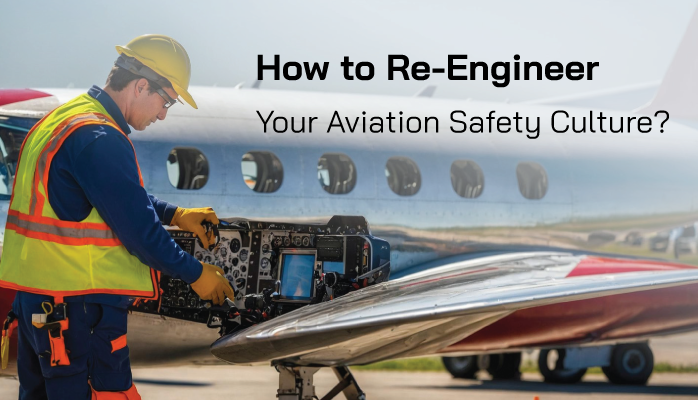Important Questions for Safety Culture

This New Year’s celebration was filled with pride for the aviation industry because we heard that 2017 was the safest year on record for commercial air travel. The following week, news about the grounding of two senior pilots of a London-Mumbai flight surfaced in the headlines because of a fight in the cockpit, and subsequently, both came out of the cockpit, leaving the aircraft unmanned.
Expert discussion threads on social media surrounding this incident were filled with anger and many of them blamed cultural factors, although the exact cause of the incident is still unknown to us.
Is culture something fixed that can’t be changed? If there can be “standard operating procedures” across the industry in technical areas, why can’t we create “standard operating cultures” in human interaction? How can we re-engineer aviation safety culture?
How to Re-Engineer Aviation Safety Culture
What is safety culture? What elements make up a culture? One way to think about culture is “it is the way we do things in our group”. This can be applied to a national, ethnic, professional, sports team, or family culture. Every group of people that stays together for any length of time develops a set of operating rules that are both explicit and implicit. Some we talk about and write down and some we don’t, they are the “standards of behavior everyone knows and follows”. While we cannot re-engineer someone’s past, it is possible to engineer a standard operating culture they can learn.
Cultures develop organically, but we can also alter or develop the culture of an organization in a specific direction. We do this through the rules we choose to institute, rewarding certain behaviors and punishing others and education. When we think about education, most of us imagine we are talking about the way we think. In the author's work, we also address emotions as a domain of learning. This makes sense because every human has emotions irrespective of their culture.
The key to working with emotions is that, although we all have the same emotions, we understand them differently because emotions are interpretations. There is no universal definition of what an emotion is or what each emotion signifies. What is possible is to create a shared interpretation of emotions that turns them into a working tool. Otherwise, we are in different conversations and will never end up in the same place.
How does that make a difference?
Related Aviation Safety Culture Articles
- 6 Types of Safety Culture in Aviation Safety Management Systems
- How to Monitor Aviation SMS' Safety Culture Performance
- 5 Characteristics of Effective Aviation Safety Cultures - With Free Survey
Relationship Between Emotions and Safety Culture

If you are in the U.S., “being ambitious” is considered an excellent quality and if you are not ambitious, others may think there is something wrong with you. In some other cultures, the emotion of ambition may be synonymous with being materialistic and could be perceived as a “bad emotion”.
If we are committed to developing a "standard operating culture," we need to shift to seeing emotions as “supporting” or “not supporting” our activities and goals, rather than labeling them "good” or “bad." So, the question we might be asking in the context of our work is whether “ambition” supports our safety standards. There are more than 250 emotions available to us and working with each of them this way allows us to see them as useful tools in developing a safety culture rather than something to avoid.
Tremendous advances have been made in the technical and automation aspects of aviation that have resulted in improved aviation safety. The area we can now enhance safety is in human factors and one of the biggest drivers of human actions and interactions is emotions. Rather than trying to "get the emotions out” of our work, maybe it is time to embrace them as the powerful tool they can be. After all, in our organizations, we encourage emotions like
- loyalty,
- care, and
- prudence.
What if we could see the value of all emotions and create a shared interpretation that supports our aviation safety culture?
About Safety Relations
Safety Relations is a social learning environment offering a coaching-based approach to developing a safety culture and pilot well-being. The ACTIVE Safety Culture is a practical learning framework developed to transform every employee into a safety leader and thereby create a positive safety culture in your organization. Safety coaching is a powerful tool to help others see safety the way you see it and is a skill that can be learned. Safety coaching is different from safety training, consulting, or advising and can be a powerful addition to "Safety Promotions," the fourth pillar of your Safety Management Systems.
For more details, please visit Safety Relations
Last updated July 2024.





